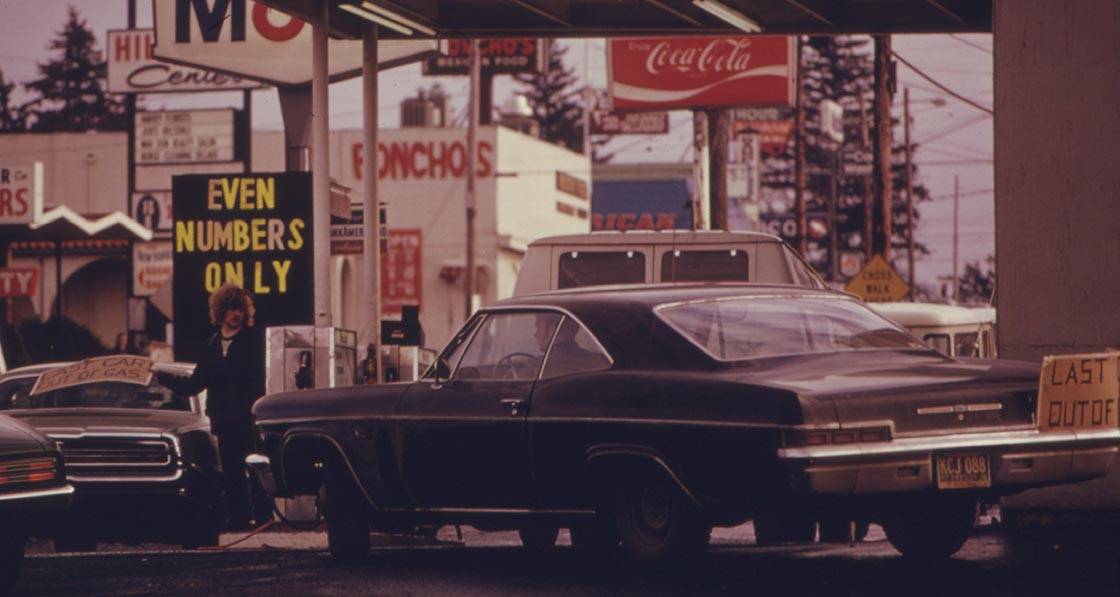
- Blogs
- Posted
The first oil crisis
In the latest instalment of his series on the development of energy efficiency and renewable energy in the 20th century, Dr Marc Ó Riain reports on the seismic impact caused by the 1973 oil crisis.
This article was originally published in issue 33 of Passive House Plus magazine. Want immediate access to all back issues and exclusive extra content? Click here to subscribe for as little as €10, or click here to receive the next issue free of charge
Western culture was irrevocably changed by the oil crisis of 1973. The embargo by the Organisation of Arab Petroleum Exporting Countries (OAPEC) may have failed, but it changed the global political order, international government policies, and the cars we drive. It would turn out to be the key factor in future research for renewable energy and building energy conservation.
Before 1973 we drove big cars, paid little for fuel and built houses with little concern for energy conservation. Whilst the UK had introduced building standards from 1959 to 1972, Ireland failed to do so until 1992. Whilst voluntary standards existed, they were relatively poor, as political priorities were driven by cheap and abundant oil.
Public and environmental opinion towards fossil fuels and nuclear power had started to shift, with the negative pollution and human impacts of the Aberfan coal heap collapse (1966), the Windscale nuclear reactor fire in Wales (1957), the Torey Canyon oil spill off Cornwall (1967) and the Santa Barbara oil spill (1969). The subsequent establishment of the EPA in the US in 1970, Greenpeace in 1971, the first UN Conference on Environment in 1972, and the Green Party in the UK in 1973, all reflect a tectonic shift in both government policy, public opinion, and the lobbying power of the environmental movement.
The sudden depletion of oil reserves threatened national economic and societal collapse.
In October 1973, as people were filling their home heating tanks with oil for the equivalent of $3 a barrel, an Egyptian and Syrian offensive against Israel resulted in the Yom Kippur War. The Israeli rout of the Egyptian 3rd army at Suez was supported by arms from the US and its allies. An angry OAPEC placed an oil embargo against the Western countries supporting Israel, gradually closing the tap on their oil supply up to 25% by December 1973, resulting in the UK and US being seriously depleted.
As a result, the price of oil increased 400% from $3 to $12 by 1st of January 1974, with petrol stations and home heating quickly following. People could only refuel their cars every other day with the even/odd car number car plate rationing rule, speed limits of 55mph and Sunday driving bans were introduced, together with year-round daylight savings. The public suddenly started to become acutely aware of their energy consumption for the first time. One result was a public shift away from large, less economical cars, resulting in the popularity of the hatchback (the Fiat 127 was originally produced in 1971, the Renault 5 & Peugeot 104 in 1972 and the VW Golf in 1974).
The sudden depletion of oil reserves threatened national economic and societal collapse. Gross national product (GNP) and increasing unemployment were a direct result, bringing industrialised countries to their knees. In February 1974, Richard Nixon and Henry Kissinger led an international energy conference in Washington attended by the 24 OECD member countries representing 85% of net oil consuming countries, including the United Kingdom and Ireland.
Coming out of the conference, Nixon adopted a US policy for energy self-sufficiency, entitled Project Independence 1980. This policy became central to both US and UK domestic and foreign policy for nearly two decades. Both nations pivoted towards greater oil exploration and fracking in Alaska and the North Sea. Out of the same conference came the formation of the International Energy Agency in November 1974. As part of the energy conservation responses, building energy conservation standards in the UK were revisited and improved. Ireland created a non-statutory set of building energy standards close to that of Scotland.
Most governments stepped up R&D on renewable energy, to reach a peak in 1980, followed by decline thereafter; Denmark heavily invested in combined heat and power with district heating. Sweden focused on nuclear power, biofuels and hydropower, reducing manufacturing industry oil consumption from 48% to 10% .
Although by April 1974 Israel had withdrawn from the Suez Canal, and the embargo was lifted, the entire geopolitical landscape had been utterly redrawn, forcing the west into action over the ‘oil weapon’.
A political motivation, the 1973 oil crisis, rather than the environmental movement, was the critical driver of international energy conservation and renewable policy.
Pragmatism rather than ideology won the day… certainly a lesson for the Green Party and those of us who support environmental policies today. My next article will focus on early zero energy buildings in the 1970s.






